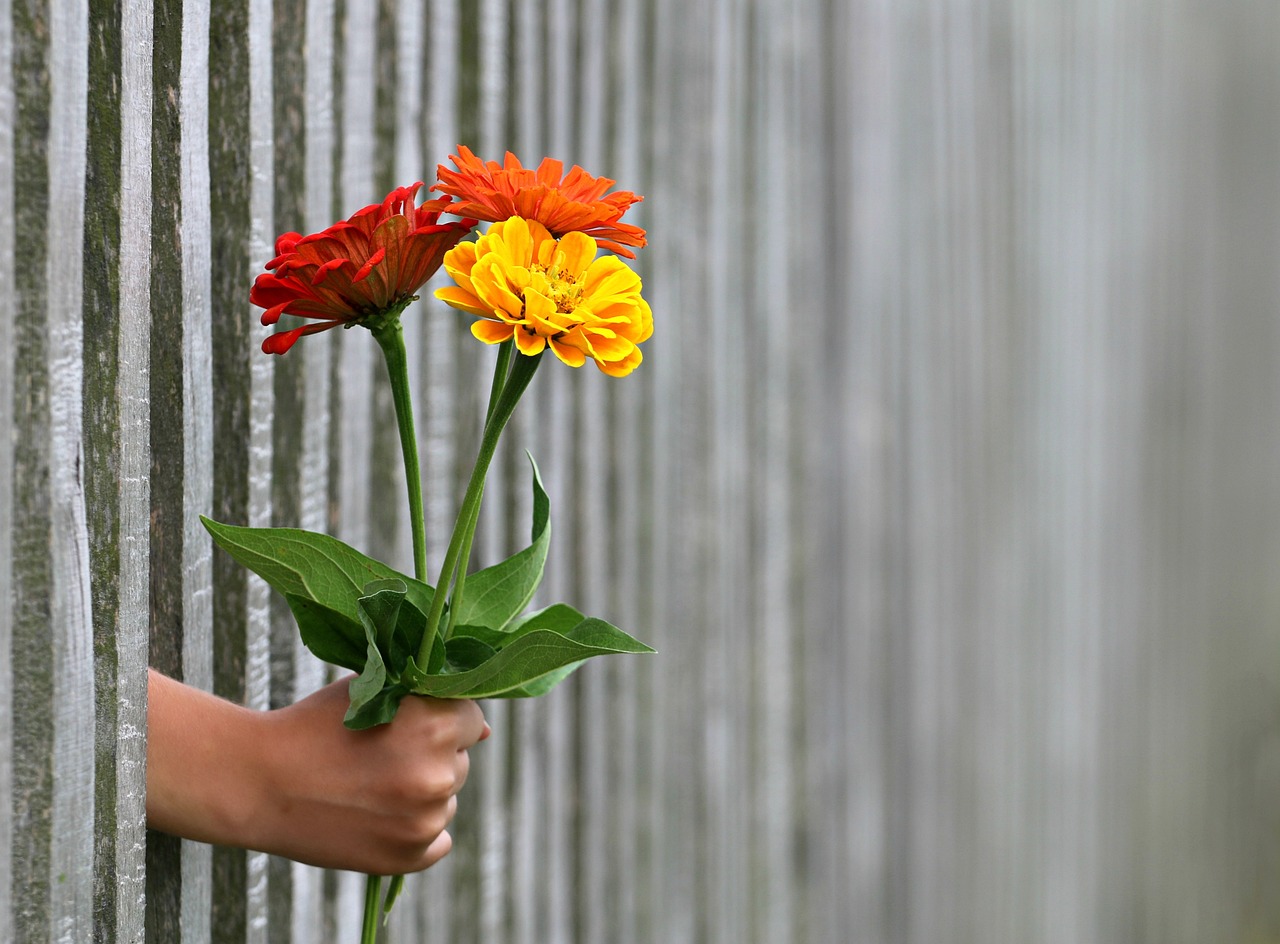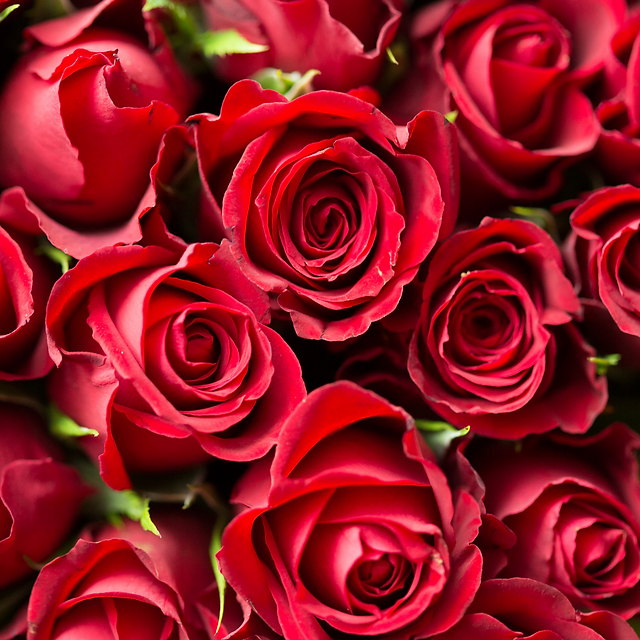Table of Contents
Flowers, with their captivating beauty and enchanting fragrance, hold a special place in the realm of the divine and the spiritual. Across cultures, religions and traditions, flowers have been revered as powerful symbols and offerings in various religious and spiritual practices. In this article, we delve into the multifaceted role of flowers in these sacred contexts, exploring the profound significance they hold in connecting humanity to the divine.
The allure of flowers extends far beyond their physical beauty and fragrance; it reaches into the very heart of human spirituality and our innate connection to the divine. Across the tapestry of human cultures, religions and traditions, flowers have been cherished as sacred symbols and meaningful offerings, serving as a profound bridge between the earthly and the spiritual realms. In this exploration, we journey deeper into the multifaceted role of flowers within these hallowed contexts, unearthing the rich tapestry of meanings and significance they hold in our quest to connect with the divine.
In countless religious practices and spiritual traditions, flowers have been a medium through which devotees communicate with the divine. The act of offering flowers in worship is a universal symbol of reverence and devotion. The purity, beauty and transience of flowers mirror the ephemeral nature of life itself, serving as a reminder of the impermanence of the material world and the enduring presence of the spiritual.
In Hinduism, for example, the garland of fresh flowers, known as “mala,” is an essential element of worship. Devotees string vibrant blossoms together as a gesture of love and respect when paying homage to deities. Similarly, in Buddhism, flowers are an integral part of religious rituals, symbolizing the transient nature of existence and the path toward enlightenment. Lotus flowers, in particular, hold special significance, representing purity and spiritual awakening.
In Christianity, the Easter lily is a symbol of resurrection and new life, serving as a reminder of the spiritual rebirth that Easter commemorates. The rose, often associated with the Virgin Mary, signifies love, devotion and the divine feminine. In Islam, fragrant flowers are used to perfume mosques and homes, creating an atmosphere of purity and spirituality during prayer.
Beyond their role in rituals, flowers are revered for the serenity and inspiration they offer in spiritual contemplation. The sight and scent of a blooming garden or a simple bouquet can evoke a sense of awe and wonder, inviting individuals to connect with the divine on a deeply personal level.
Flowers also hold the power to transcend linguistic and cultural barriers, serving as a universal language of the heart in expressing spiritual devotion and gratitude. Their vibrant colors, delicate petals and intoxicating fragrances speak to the soul, reminding us of the interconnectedness of all life and our eternal link to the divine.
In essence, flowers serve as a living testament to the intersection of humanity and the sacred. They are more than botanical marvels; they are emissaries of the divine, awakening our spiritual senses and reminding us of the eternal beauty and grace that transcends the material world. In honoring the role of flowers in connecting us to the divine, we pay homage to the profound and enduring significance they hold in our spiritual journey.
If you’d like to dive deeper into this subject, there’s more to discover on this page: 11. Indigenous spiritual practices | Ontario Human Rights Commission
Hinduism: The Offerings to the Gods
In Hinduism, flowers play a central role in worship and devotion. Devotees offer fresh blooms to deities during prayers and rituals, symbolizing purity and devotion. The lotus flower, in particular, holds great importance as it represents spiritual enlightenment and purity rising from the depths of material existence. In temples and homes alike, intricate floral garlands adorn idols, creating an atmosphere of reverence and devotion.
In Hinduism, the significance of flowers extends far beyond their mere aesthetic beauty; they are imbued with profound spiritual symbolism and are integral to the practice of worship and devotion.
The Offering of Fresh Blooms: The act of offering fresh flowers to deities during prayers and rituals is a deeply ingrained tradition in Hinduism. Devotees consider the act of presenting flowers as an expression of purity and devotion. The freshness and fragrance of the blooms symbolize the offering of one’s best to the divine, reflecting a heart filled with love and reverence.
The Lotus, a Symbol of Enlightenment: Among the myriad of flowers used in Hindu rituals, the lotus holds a special place of honor. The lotus flower, with its exquisite beauty and unique growth from the muddy waters to the surface, symbolizes spiritual enlightenment and purity emerging from the depths of material existence. It signifies the journey of the soul from ignorance to spiritual awakening, transcending the challenges of the earthly realm.
Floral Garlands and Idols: In Hindu temples and homes, one can witness the artistry of devotion through the creation of intricate floral garlands. These garlands, known as “malas,” are carefully crafted from a variety of flowers and leaves. They adorn the idols of deities, turning them into resplendent forms of divine beauty. The act of creating these garlands is itself a form of devotion, requiring skill and dedication.
Creating an Atmosphere of Reverence: The presence of floral garlands and flower offerings in temples and homes creates an atmosphere of reverence and sanctity. The vibrant colors and fragrant scents infuse the sacred space with a sense of purity and spirituality. The act of arranging and offering flowers is a mindful practice that allows individuals to connect with the divine on a deeply personal level.
Spiritual Lessons from Flowers: Hinduism teaches that there are spiritual lessons to be learned from flowers. Just as the lotus rises above the murky waters to bloom in pristine purity, individuals are encouraged to strive for spiritual growth and transcendence despite the challenges of worldly existence. Flowers serve as a constant reminder of the potential for spiritual enlightenment and purity within each soul.
In conclusion, in Hinduism, flowers are not just decorative elements but vessels of devotion, carriers of symbolism and conveyors of profound spiritual lessons. They facilitate a deep connection between devotees and the divine, reminding individuals of the eternal journey towards spiritual enlightenment and purity. Through the act of offering and adorning with flowers, Hindu worshipers express their unwavering faith and dedication to the divine presence in their lives.
Looking for more insights? You’ll find them right here in our extended coverage: Hibiscuses and Hinduism: How Gardens Cultivate Culture …

Buddhism: The Path to Enlightenment
Buddhism, with its emphasis on mindfulness and enlightenment, also embraces the symbolism of flowers. The lotus, once again, is a key motif, symbolizing the journey from ignorance to enlightenment. In Buddhist art and rituals, the unfolding lotus petals represent the gradual opening of the mind to the wisdom of the Buddha’s teachings.
Buddhism, a spiritual path renowned for its profound teachings on mindfulness and enlightenment, beautifully incorporates the symbolism of flowers into its rich tapestry of beliefs. Among the various floral symbols, the lotus takes center stage once more, serving as a powerful emblem of the transformative journey from ignorance to enlightenment.
The lotus’s significance in Buddhist traditions is deeply rooted in its unique growth process. The lotus emerges from the muddy waters of ponds and lakes, yet its pristine petals remain untouched and unsullied by the murky surroundings. In this, it mirrors the human journey towards spiritual awakening—a path that often begins amidst the challenges and impurities of everyday life, yet leads to a state of purity and enlightenment.
In the realm of Buddhist art and rituals, the lotus takes on a profound role. Its blossoming petals are seen as a metaphor for the gradual unfolding of the human mind to the profound wisdom contained within the Buddha’s teachings. Each petal represents a step forward on the spiritual path, symbolizing the progressive stages of spiritual development and understanding. Just as the lotus gradually opens to reveal its inner beauty, so too does the individual, through mindful practice and study, uncover the profound truths of existence.
The lotus is not only an emblem of personal growth but also a representation of universal compassion and interconnectedness. In Buddhist iconography, various Buddhas and bodhisattvas are often depicted seated or standing on lotus thrones, signifying their transcendence over worldly suffering and their dedication to guiding others toward enlightenment. This symbolizes the ideal of extending a compassionate hand to help others on their own journeys towards awakening.
Moreover, the lotus holds regional significance in Buddhism, with different colors and types of lotus flowers carrying their own unique meanings. The blue lotus, for instance, is associated with wisdom, while the white lotus symbolizes purity and spiritual perfection.
In essence, the lotus in Buddhist symbolism is a profound reminder of the transformative power of mindfulness and the human potential for enlightenment. It encourages practitioners to embrace the challenges and impurities of life as opportunities for growth, much like the lotus emerges unblemished from the mud. As we contemplate the lotus in the context of Buddhism, we are inspired to embark on our own spiritual journey, seeking wisdom, compassion and enlightenment in the teachings and practices of this ancient and enduring tradition.
Don’t stop here; you can continue your exploration by following this link for more details: Buddhism in Japan | Asia Society

Christianity: The Beauty of Creation
In Christianity, flowers are often used to adorn churches and altars during religious ceremonies and festivals. They symbolize the beauty of God’s creation and serve as a reminder of the transient nature of life. Flowers like lilies are particularly associated with the Virgin Mary and are used to honor her purity and grace.
The use of flowers in Christian traditions goes beyond mere decoration; it carries profound symbolism and spiritual significance. In the Christian faith, flowers play a multifaceted role that enriches religious ceremonies and deepens the connection between believers and their spirituality.
1. Symbolism of Beauty and Creation: Flowers, with their intricate designs and vibrant colors, are seen as symbols of God’s divine creativity and the inherent beauty of His creation. When flowers adorn churches and altars, they serve as a visual reminder of the wondrous world that God has crafted.
2. Representation of Life’s Transience: In the Christian context, flowers also serve as a poignant reminder of the fleeting nature of earthly life. Just as a flower blooms briefly and then withers, human life is seen as a temporary journey on Earth. This symbolism encourages believers to focus on the eternal and spiritual aspects of life.
3. Lilies and the Virgin Mary: Among the various flowers used in Christian traditions, lilies hold a special place of honor. They are closely associated with the Virgin Mary, symbolizing her purity, grace and motherhood. White lilies, in particular, are often used to pay homage to Mary’s immaculate nature.
4. Easter Lilies: Easter, one of the most important Christian celebrations, is closely linked with the symbolism of lilies. Easter lilies, with their pure white petals, are a symbol of the resurrection of Jesus Christ. They represent the triumph of life over death and serve as a reminder of the hope and renewal that Easter signifies.
5. Wedding Ceremonies: In Christian weddings, flowers are not just decorative elements; they hold deep spiritual significance. The exchange of flowers between the bride and groom symbolizes their commitment to love and honor each other, mirroring the love that Christ has for His Church.
6. Funerals and Memorials: Flowers are commonly used in Christian funerals and memorials as a symbol of the hope of resurrection and eternal life. They offer comfort to grieving families and remind them of the promise of a glorious reunion in the afterlife.
7. Seasonal Celebrations: Throughout the Christian liturgical calendar, various flowers are associated with different seasons and feasts. For instance, poinsettias are prominent during the Christmas season, while palms are used on Palm Sunday to commemorate Jesus’ triumphal entry into Jerusalem.
8. Expressing Devotion and Gratitude: Beyond their symbolic meanings, flowers in Christian worship and practice also serve as a form of devotion and gratitude to God. They are offered with love and humility as a way to connect with the divine.
In essence, the use of flowers in Christianity transcends mere aesthetics; it is a powerful means of conveying and reinforcing the core spiritual values of the faith. Through their beauty, symbolism and historical significance, flowers enhance the religious experience and provide a tangible link between the earthly and the divine, enriching the spiritual journey of believers.
To delve further into this matter, we encourage you to check out the additional resources provided here: Religions and environmental protection | UNEP – UN Environment …

Islam: Fragrance and Symbolism
While Islam does not incorporate flowers into religious rituals to the same extent as some other traditions, the fragrance of flowers holds significance in Islamic culture. The scent of flowers is believed to be a reminder of paradise and the use of floral scents is encouraged, particularly during Islamic holidays and celebrations.
“While Islam does not incorporate flowers into religious rituals to the same extent as some other traditions, the fragrance of flowers holds deep cultural and spiritual significance within Islamic communities. This reverence for floral scents reflects a broader connection between the natural world and Islamic spirituality.
1. Perfume as a Form of Personal Purification: In Islam, cleanliness and purification are essential aspects of religious practice. Using perfumes or scented oils, often derived from flowers, is encouraged as a means of personal purification and hygiene. This practice aligns with the concept of taharah or ritual purity, which is essential for Muslims before engaging in acts of worship, such as prayer or recitation of the Quran.
2. Symbolism of Paradise: The significance of floral scents in Islamic culture is intricately tied to the idea of paradise (Jannah). In the Quran, paradise is described as a place of eternal beauty and delight, where fragrant gardens with flowing rivers await the righteous. The use of floral scents serves as a reminder of this heavenly promise, offering a glimpse of the pleasures that await in the afterlife.
3. Festivals and Celebrations: Floral scents play a prominent role during Islamic holidays and celebrations, such as Eid al-Fitr and Eid al-Adha. On these joyous occasions, it is common for Muslims to apply perfumes and fragrant oils, enhancing their sense of well-being and spiritual connection. The act of wearing fragrances also reflects the festive spirit and communal celebrations that mark these important events.
4. Connection to Nature: Islam encourages believers to appreciate and respect the natural world as a creation of Allah (God). The appreciation of floral scents fosters a deeper connection to nature, reminding individuals of their role as stewards of the Earth. This connection encourages environmental consciousness and the preservation of the Earth’s beauty, aligning with Islamic principles of stewardship (khilafah) over the planet.
5. Healing and Well-Being: Beyond their spiritual significance, floral scents are believed to have therapeutic properties in Islamic tradition. Aromatherapy and the use of floral essences are often recommended for their potential to promote relaxation, reduce stress and enhance overall well-being. This holistic approach to health acknowledges the interplay between the physical, emotional and spiritual aspects of human existence.
In Islam, the use of floral scents is a sensory and spiritual practice that deepens the connection between believers and their faith. It serves as a reminder of the divine promise of paradise, encourages personal purification and fosters a sense of well-being and connection to the natural world. While flowers may not be integrated into religious rituals in the same way as in some other traditions, the power of their fragrance endures as a symbol of beauty, spirituality and the profound relationship between humanity and the divine.”
Don’t stop here; you can continue your exploration by following this link for more details: Blooming With Symbolism: 10 Flowers in the Quran That Are Full of …

Native American Spirituality: Connection to the Earth
For Native American tribes, many flowers hold deep spiritual significance. They are often used in healing ceremonies and rituals to connect with the spirits of nature. The “Four Sacred Medicines” in Native American spirituality include sage, cedar, sweetgrass and tobacco, with sweetgrass often woven into braids or circles and used in purification and prayer ceremonies.
For Native American tribes, the profound spiritual connection with nature extends to many aspects of their cultural practices, including the use of flowers and plants. These botanical elements serve as bridges between the physical and spiritual realms, facilitating communication with the spirits and ancestors. Expanding on the significance of flowers in Native American spirituality:
Medicinal and Healing Wisdom: Native American communities have an extensive understanding of the healing properties of various flowers and plants. They’ve used these natural remedies for generations to treat physical ailments and promote well-being. The wisdom of herbal medicine, passed down through oral tradition, is a testament to the intimate relationship between indigenous peoples and the plant world.
The Sacred Circle: The concept of the sacred circle is central to many Native American rituals. Sweetgrass, with its aromatic qualities and delicate, braided form, is often used to create these circles or braids during ceremonies. The circular shape symbolizes unity, wholeness and the interconnectedness of all life. When ignited, the smoke from burning sweetgrass carries prayers and intentions to the spirits.
Purification Rituals: Sweetgrass is renowned for its purifying properties. In Native American spirituality, its smoke is believed to cleanse spaces, people and objects of negative energy and influences. It is often used in purification rituals before important ceremonies or gatherings, ensuring a spiritually clean and harmonious environment.
Prayer and Blessing: Flowers and herbs like sweetgrass are integral to prayer and blessing ceremonies. The sweet aroma of burning sweetgrass is thought to carry prayers to the Creator, making it an essential component of many spiritual gatherings. Participants often hold sweetgrass braids as they pray, enhancing their connection to the divine.
Connection with Ancestors: The use of flowers and plants in Native American rituals is a way to connect with ancestors and spirits. Each flower and herb has a unique energy and symbolism and their presence in ceremonies helps bridge the gap between the physical and spiritual realms, fostering a sense of continuity and guidance from the past.
Environmental Stewardship: Native American tribes also emphasize the importance of environmental stewardship. Their spiritual connection to nature encourages practices that honor and protect the land and its resources, recognizing the interconnectedness of all living beings.
In essence, for Native American tribes, flowers and plants are not merely elements of the natural world; they are conduits for spiritual communication, healing and cultural preservation. These sacred botanical allies continue to play a vital role in maintaining the spiritual, physical and environmental well-being of indigenous communities, serving as a testament to the deep respect and reverence they hold for the natural world.
To delve further into this matter, we encourage you to check out the additional resources provided here: Nature’s Role in American Indian Culture – Faust Gallery

Taoism: Harmony with Nature
In Taoism, an ancient Chinese philosophy and religion, there is a deep reverence for nature and its elements, including flowers. Taoist teachings emphasize living in harmony with the natural world and flowers are seen as symbols of this connection. The lotus, again, represents purity and enlightenment in Taoist beliefs.
In the rich tapestry of Taoism, an ancient Chinese philosophy and spiritual tradition, the profound reverence for nature extends to every aspect of existence and flowers hold a special place as symbolic bridges between the human experience and the natural world. Taoist teachings, deeply rooted in the principles of balance, harmony and interconnectedness, emphasize the importance of living in alignment with the rhythms of nature. In this context, flowers serve as poignant symbols that embody the essence of these teachings.
Harmony with Nature: Taoism, often symbolized by the yin-yang symbol, reflects the concept of balance and harmony. Flowers, with their delicate beauty and intricate designs, exemplify this balance. They are seen as harmonious expressions of nature’s creativity, reminding Taoists of the need to cultivate harmony in their own lives.
Transience and Impermanence: Taoist philosophy acknowledges the impermanence of all things, a concept embodied by the fleeting beauty of flowers. The ephemeral nature of blooms serves as a poignant reminder of life’s transitory essence. This perspective encourages Taoists to savor the present moment and find contentment in the ever-changing rhythms of existence.
Symbolism of the Lotus: Within Taoism, the lotus flower holds particular significance. Rising from the mud and water to bloom in pristine beauty, the lotus symbolizes purity and enlightenment. Its growth process mirrors the spiritual journey, where individuals strive to rise above worldly concerns and attain spiritual insight and purity. The lotus is a powerful reminder that even amidst life’s challenges and muddied waters, one can achieve spiritual clarity and enlightenment.
Alignment with Natural Cycles: Taoism places great importance on aligning with the natural cycles of life. Just as flowers follow the seasons, blooming in their own time, Taoists strive to flow with the rhythms of existence, embracing change rather than resisting it. This naturalistic perspective encourages flexibility, adaptability and a deep sense of peace.
Inspiration for Art and Poetry: Taoist reverence for flowers has inspired countless works of art, poetry and literature in Chinese culture. Paintings and verses often feature flowers as symbols of beauty, virtue and the interconnectedness of all life. These creative expressions serve as a means of deepening the understanding of Taoist principles.
In essence, flowers hold a treasured place in Taoist philosophy, serving as powerful symbols that bridge the human experience with the natural world. They encapsulate the wisdom of balance, impermanence and the pursuit of purity and enlightenment. Through flowers, Taoists find a tangible connection to the profound teachings of their tradition, reminding them to live in harmony with the ever-changing tapestry of existence.
If you’d like to dive deeper into this subject, there’s more to discover on this page: SPIRITUAL CONNECTIONS WITH THE NATURAL ENVIRONMENT …

New Age and Spiritual Practices: Floral Essences
In contemporary spiritual practices and New Age movements, floral essences and remedies have gained popularity. These are believed to harness the spiritual and healing properties of flowers. Practitioners use flower essences as tools for emotional and spiritual growth, seeking balance and alignment with the higher self.
In contemporary spiritual practices and New Age movements, floral essences and remedies have gained popularity as a fascinating bridge between nature’s beauty and inner transformation. These delicate elixirs are believed to harness the profound spiritual and healing properties of flowers, offering seekers a unique path to self-discovery and personal evolution.
At the heart of this resurgence is the idea that each flower carries its own vibrational frequency and energetic signature, which can be imprinted into water and preserved as a potent essence. These floral essences are seen as gateways to the soul, providing a subtle yet profound means of connecting with the higher self and transcending the mundane aspects of life.
Practitioners who embrace floral essences often describe their experiences as a harmonious dance between the physical and spiritual realms. Just as flowers bloom and flourish in their natural environments, these remedies are thought to help individuals bloom into their fullest potential. Here are some intriguing dimensions to this blossoming phenomenon:
Emotional Alchemy: Floral essences are seen as emotional alchemists, guiding individuals through the intricate landscape of their emotions. By working with specific essences, practitioners aim to transmute negative feelings, heal past wounds and unlock the hidden facets of their psyche. This process can lead to a profound sense of emotional liberation and inner peace.
Soulful Balancing: Flowers are believed to embody a perfect balance in their form and essence, symbolizing the equilibrium that many seek in their lives. When used with intention, floral remedies are thought to help individuals align with their inner equilibrium, leading to a greater sense of well-being, purpose and spiritual growth.
Nature’s Wisdom: The practice of using floral essences emphasizes the importance of reconnecting with nature’s wisdom. It encourages a deeper appreciation for the natural world and fosters a sense of unity with the environment. Practitioners often spend time in contemplation and meditation in natural settings, further enhancing their connection to the spiritual aspects of life.
Personal Transformation: Many individuals turn to floral essences as tools for personal transformation. The journey with flower remedies is seen as a lifelong process of self-discovery, where one continuously unravels the layers of their being to reveal their true essence. This path can lead to a heightened sense of self-awareness and enlightenment.
Community and Sharing: The practice of working with floral essences often creates a sense of community and shared experience among practitioners. They gather to exchange insights, support one another’s journeys and celebrate the beauty and wonder of nature. This sense of connection can deepen the spiritual aspects of their practice.
In essence, floral essences and remedies have become not only a means of achieving emotional and spiritual growth but also a bridge to a more profound connection with the natural world. As individuals seek balance, alignment with their higher selves and a greater understanding of their place in the universe, these delicate elixirs offer a fragrant and transformative path to self-discovery and enlightenment. In a world where spirituality and nature are increasingly intertwined, floral essences stand as a fragrant reminder of the beauty and wisdom that can be found in the petals of a flower.
For a comprehensive look at this subject, we invite you to read more on this dedicated page: Should Christians use herbs and flower essences? Is it healing or …

Flowers, in their delicate beauty and ephemeral nature, serve as a bridge between the material and the spiritual realms. They remind us of the fragility and transience of life while symbolizing purity, enlightenment and the divine. Across diverse religious and spiritual traditions, the role of flowers remains a unifying thread, connecting humanity to the sacred and reminding us of the profound beauty and interconnectedness of all existence.
Certainly, let’s explore the profound connection between flowers and spirituality in more depth:
The Spiritual Essence of Flowers: Bridging the Material and Divine
Symbols of Purity and Enlightenment: Flowers have long been revered as symbols of purity and enlightenment in various spiritual traditions. Their pristine appearance, often rising from muddy waters, mirrors the journey of the soul towards spiritual awakening and transcendence. For example, the lotus flower holds deep significance in Buddhism, representing purity of mind and spiritual realization.
Offerings and Rituals: Across the world, flowers are offered in religious rituals and ceremonies. They are seen as gifts to the divine, an expression of devotion and an act of humility. The act of presenting flowers to deities or placing them on altars is a universal gesture of reverence and connection to the sacred.
Metaphors for Life and Transcendence: The ephemeral nature of flowers, their brief and beautiful existence, serves as a poignant metaphor for life itself. Their fragility reminds us of the impermanence of existence, encouraging us to cherish each moment and seek deeper spiritual meaning. In this way, flowers become messengers of mindfulness and reflection.
Interconnectedness and Unity: Flowers are intricate ecosystems in themselves, with various parts working harmoniously together. This interconnectedness mirrors the interconnected web of existence in spiritual philosophies. They remind us that, like the petals of a flower, we are all interconnected and interdependent in the grand tapestry of life.
Healing and Meditation: Aromatic flowers, such as lavender and rose, are used in practices like aromatherapy and meditation to induce a sense of calm and inner peace. Their subtle fragrances guide practitioners towards deeper states of consciousness and heightened spiritual awareness.
Universal Appeal: The significance of flowers transcends religious and cultural boundaries. Whether it’s the lotus in Buddhism, the rose in Sufism, the marigold in Hinduism or the white lily in Christianity, flowers are embraced as sacred symbols that speak to the universal human longing for spiritual connection and transcendence.
Art and Sacred Geometry: The intricate patterns and geometries found in flowers, such as the Fibonacci spiral in sunflowers, have inspired artists, mathematicians and spiritual seekers alike. These natural designs are seen as expressions of divine order and beauty, providing a window into the mathematical perfection of the universe.
Nature’s Cathedrals: Gardens and natural settings filled with blooming flowers often serve as places of contemplation and worship. They are like open-air cathedrals where individuals can commune with nature and experience a profound sense of the sacred.
In essence, flowers are more than mere botanical entities; they are messengers of the divine, bridging the gap between the material and spiritual realms. They remind us of the ephemeral nature of life, inspire purity of heart and mind and symbolize the interconnectedness of all living beings. Regardless of one’s faith or belief system, the beauty and spirituality of flowers serve as a unifying force that touches the depths of the human soul and brings us closer to the divine.
Additionally, you can find further information on this topic by visiting this page: 11. Indigenous spiritual practices | Ontario Human Rights Commission
More links
Should you desire more in-depth information, it’s available for your perusal on this page: Religion and Spirituality of Indigenous Peoples in Canada | The …
